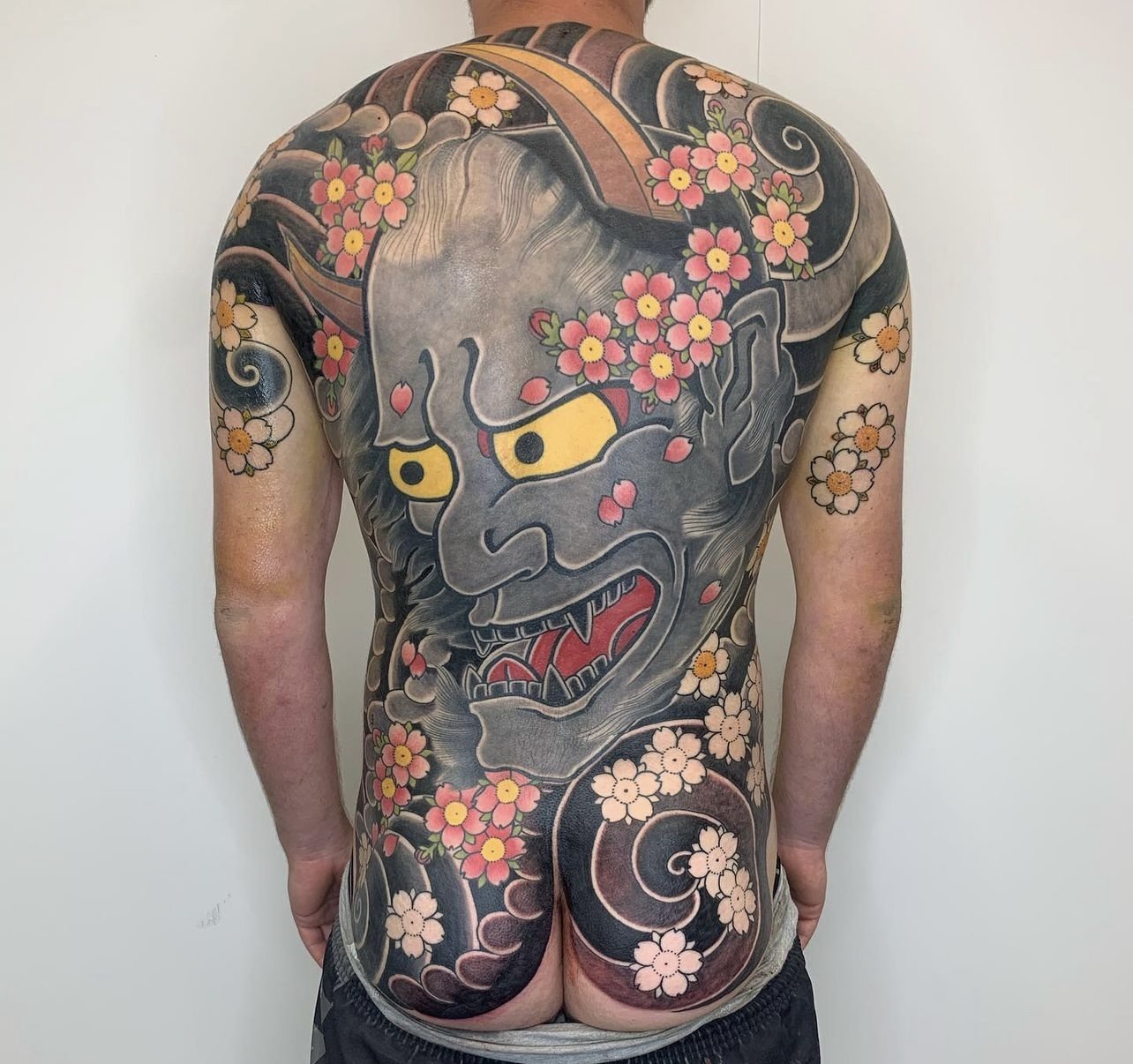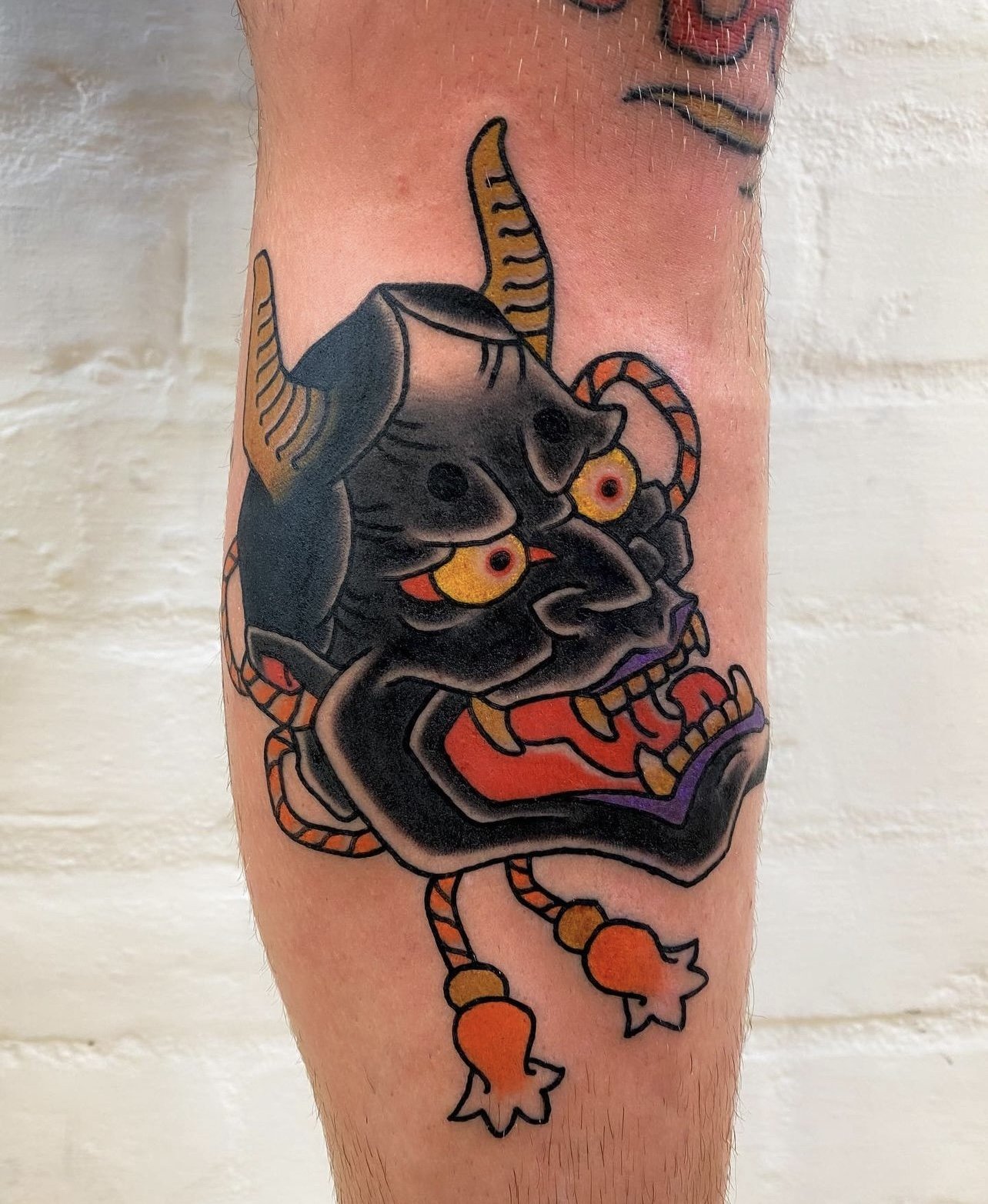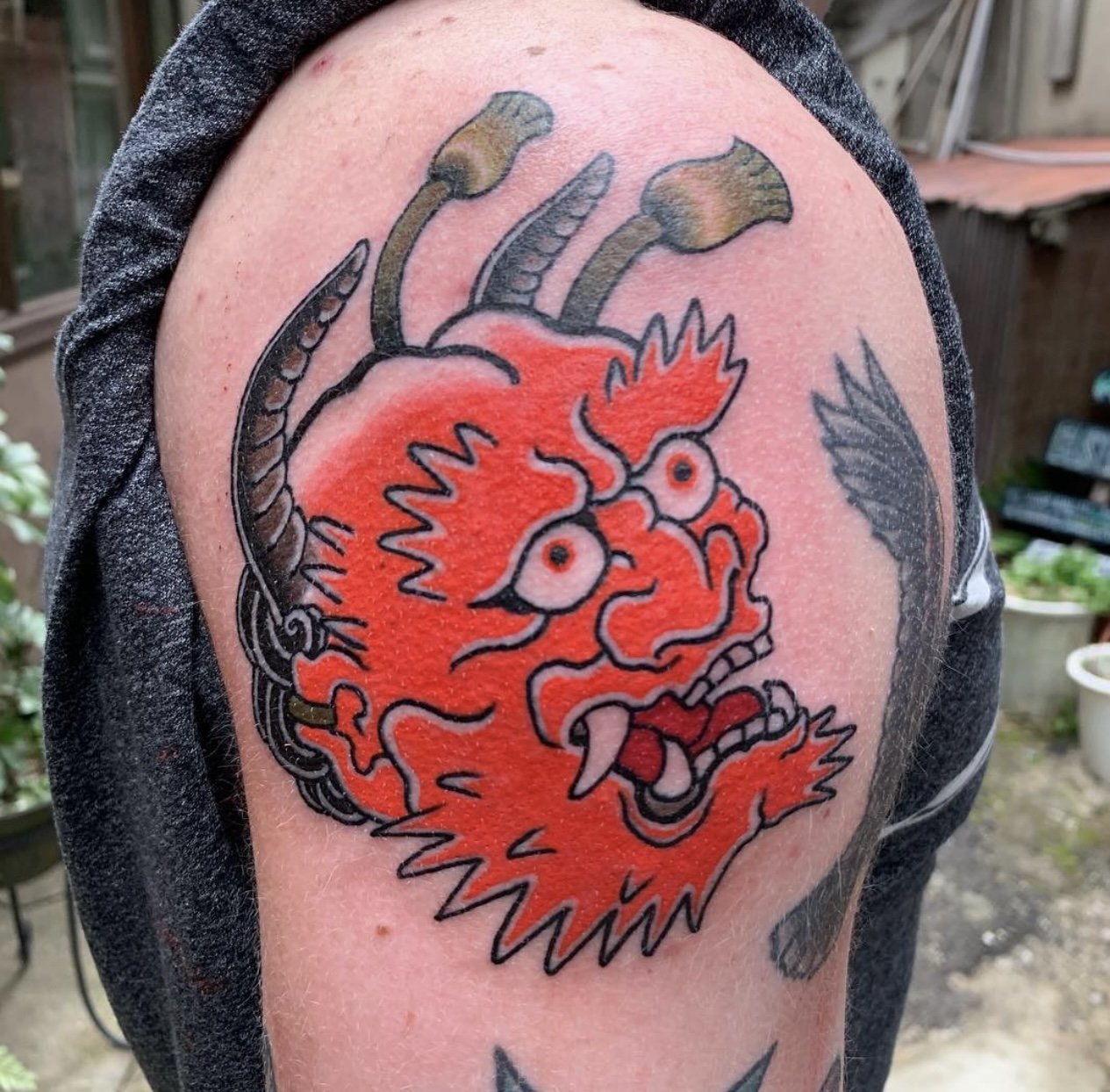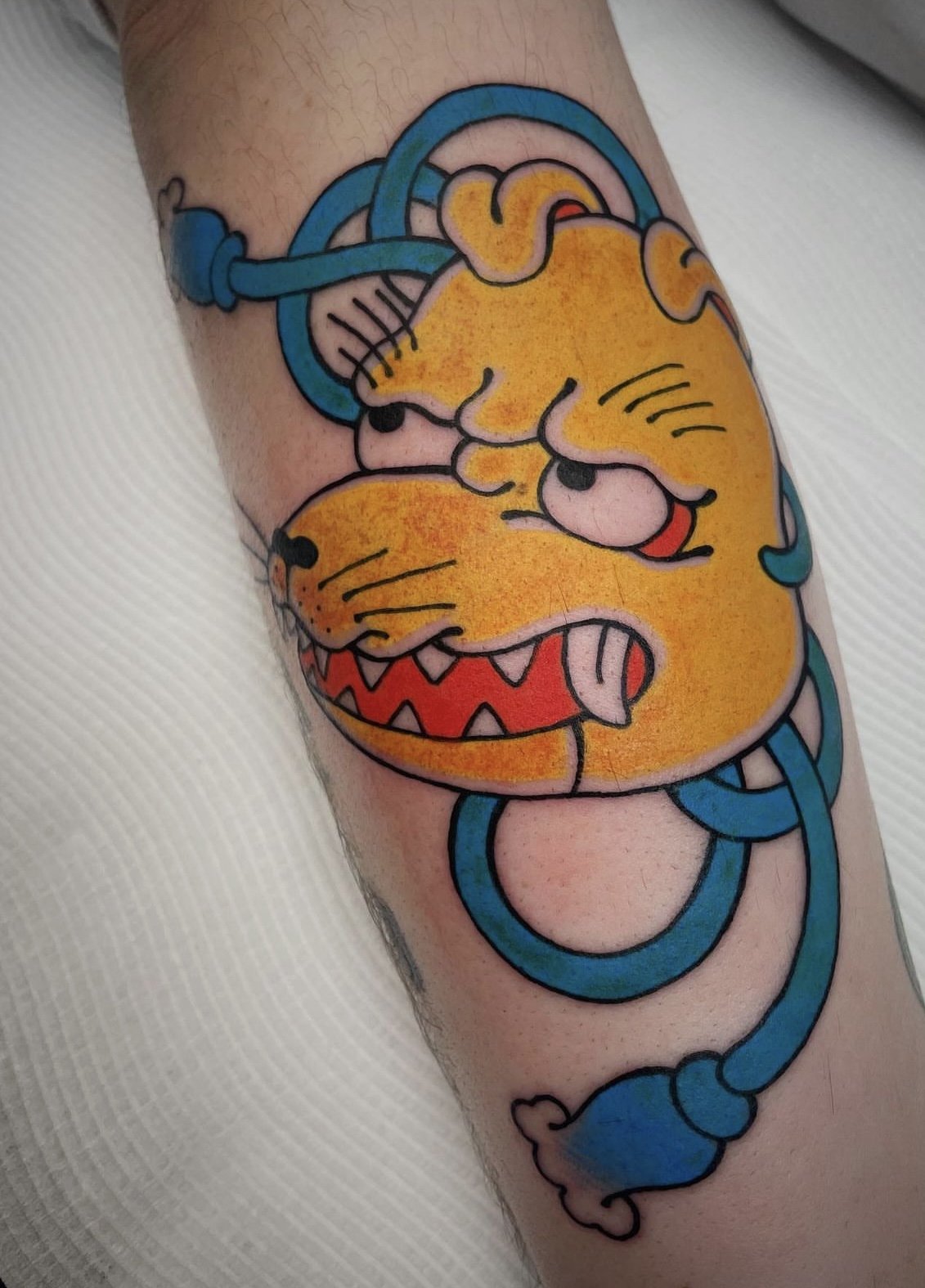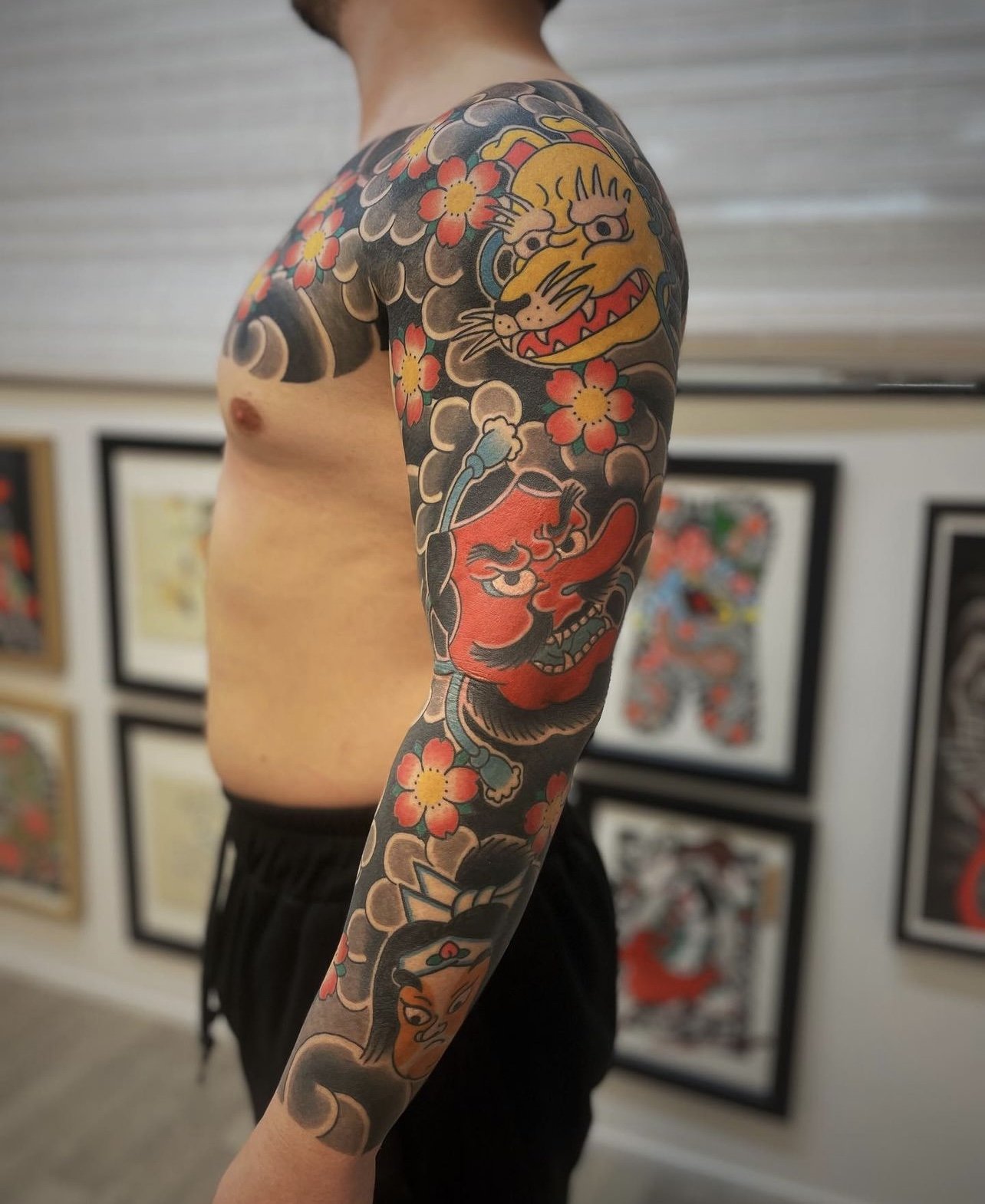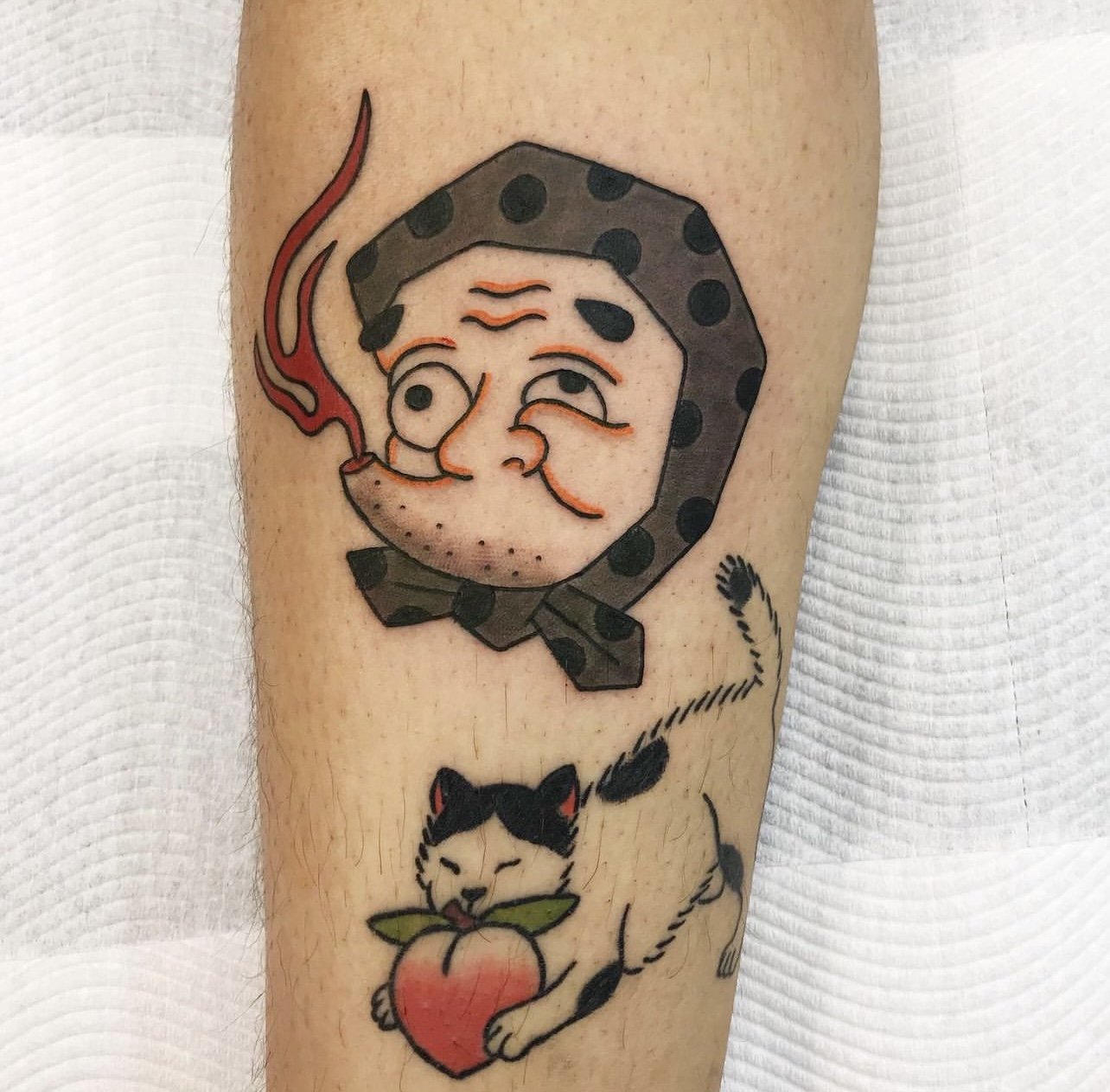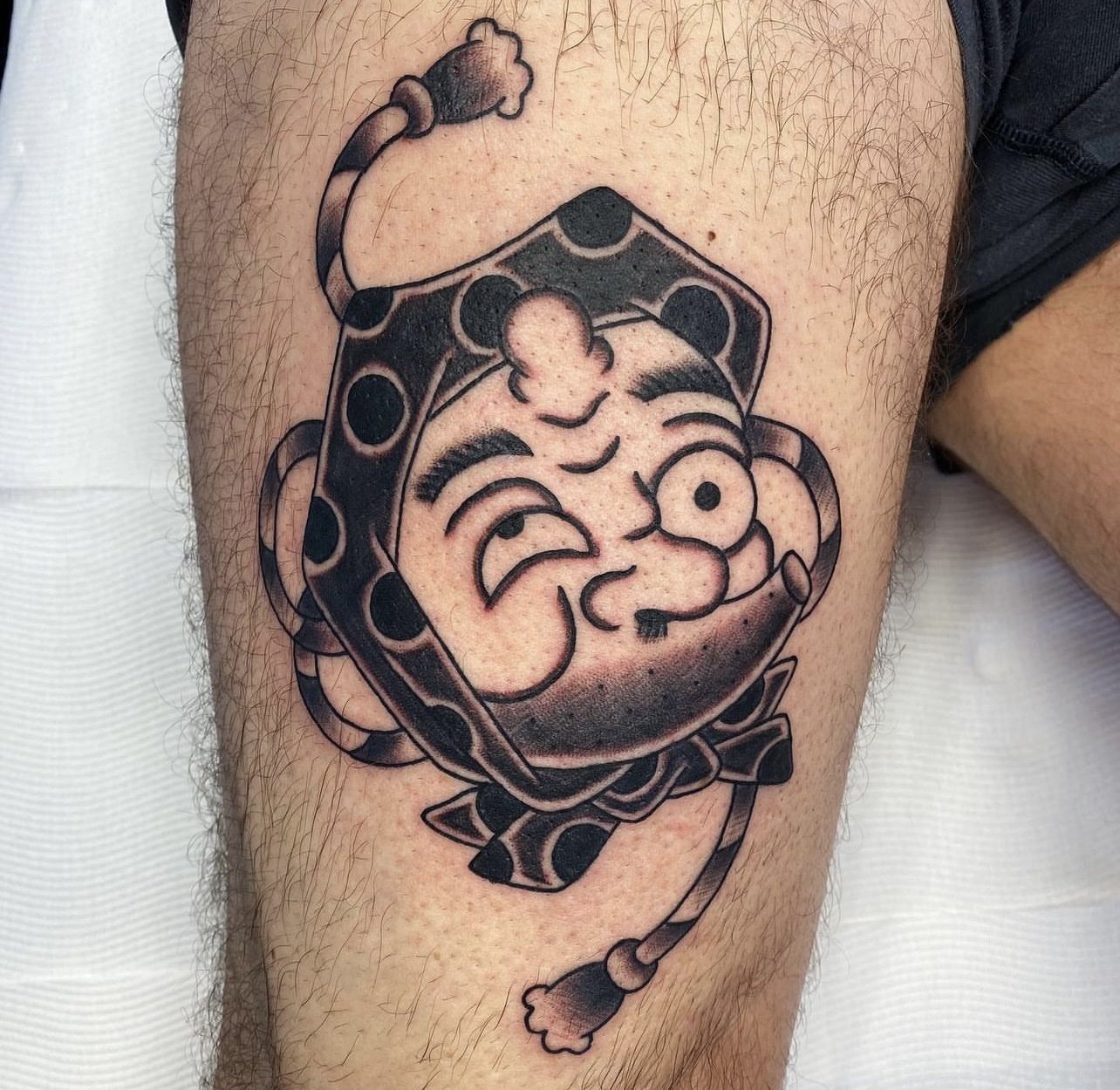Traditional Japanese masks are mostly decorative and are available for sale at shrine festivals and events. Others are worn during certain Shinto dances or by actors performing a role on the stage. Most of these masks are archetypes borrowed from myth, ancient dances or Noh theatre, and they have become some of the most popular Japanese masks that you’ll see today.
As the art of traditional Japanese tattoo progressed, it was natural for Japanese tattooers to incorporate masks into their clients tattoos to express certain cultural sentiments and meanings.
Many Masks have been adapted into tattooing through the works of Japanese ukiyo-e style of woodblock prints and painting artists of the Edo period, such as Utagawawa Kuniyoshi. Kuniyoshi’s work was very famous, and inspired many Japanese tattooers, as he provided illustrated designs of many Japanese Kabuki actors, myths, as wells as legendary samurai heroes.
Hannya
The most common, and well known in western culture is the Hannya mask. The Hannya mask first appeared in a well-known variety of traditional Japanese musical theatre known as “Noh Theatre” which was popular around this time. The actors in Noh plays would tell stories through gestures while adorned in intricate masks.
The Hannya mask was used in Noh plays to depict a woman who has become so overwhelmed with sorrow, envy, or rage that she takes on the form of a demon, dragon or serpent. Its prominent features are a leering mouth, sombre metallic eyes, sharp fang-like teeth, and two devil style horns.
Oni
Oni masks are most common during the Bean-Throwing Festival, also known as Setsubun, when people wear them for festival performances at shrines. Parents will even wear them at home to frighten their children, while the kids throw beans to scare the “oni” away and invite good luck into the house for the year.
Oni are demons. They are usually depicted as red-faced and angry with long sharp teeth. While this description is similiar to that of Hannya masks, Oni are illustrated more like goblins, and can often represent specific demons from Japanese myth and legend. Many of these have been adapted to suit Japanese tattoo.
Tengu
Tengu are the fearsome demi-gods who protect the mountains. These demon-like creatures are depicted with red faces and angry expressions. But their most obvious feature is a long, red nose. In the past, tengu were more birdlike. As they became human, that beak turned into a nose but kept its long shape. Tengu masks are used for Noh stage plays and certain Shinto festivals. They’re also often used as a decoration since the tengu are thought to frighten bad spirits and bring good luck.
The word Tengu is Chinese in its origins, and derives from the word Tiangou, meaning “Heaven Dog.” Oddly, only the name Tengu is shared between the Japanese and Chinese. In Chinese culture, the Tengu is a dog, whereas, in Japanese culture, the Tengu appears as having crow-like features. Tengu masks, typically used in religious festivals and Japanese Noh theater, show a bird-headed demon.
The Tengu had magical powers that enabled them to appear in people’s dreams, shapeshift, transport themselves, and move through space without ever moving their wings, and speak without moving their lips. Japanese folklore showed the Tengu as shapeshifting protectors of the Dharma who lead corrupt priests astray. In later legend, it was said that when a corrupt monk died, he was sent to the realm of the Tengu, where he was transformed into a phallic-nosed shame-filled monster.\
Kitsune
In Japanese folklore, kitsune (literally the Japanese word for fox) are foxes that possess paranormal abilities that increase as they get older and wiser. According to yōkai folklore, all foxes have the ability to shape-shift into human form. While some folktales speak of kitsune employing this ability to trick others—as foxes in folklore often do—other stories portray them as faithful guardians, friends, and lovers.
Kitsune masks or fox masks are worn by participants in certain Shinto festivals or by attendees just for fun. Historically, foxes were viewed as magical creatures with the ability to shape-shift. They were also seen as messengers of Inari, the Shinto god of rice, commerce, and prosperity. As a result, they are important figures in some festivals involving this god.
Hyottoko
Hyottoko (火男) is a comical Japanese character, portrayed through the use of a mask. His mouth is puckered and skewed to one side. Some masks have different eye sizes between the left and right eyes. He is often wearing a scarf around his head (usually white with blue dots). The origin of the name comes from "fire" (火, hi) and "man" (男, otoko), because the character is blowing fire with a bamboo pipe, hence the shape of the mouth.
Hyottoko is a silly, childlike figure with a comical expression on his face. His mouth is almost always rounded and skewed to one side, as the stories about him usually involve him blowing on a bamboo pipe. In some traditional Japanese dances during festivals, dancers perform the role of the clown while wearing Hyottoko masks.
Okame
Okame is the face or mask of a woman who has a short nose and swollen round cheeks.
It is said that the name was chosen because the shape of her swollen cheeks looked like a vase (kame in Japanese.)
Okame is like the female version of Hyottoko, and their masks usually appear together. They can be worn by dancers to perform amusing, silly dance steps. Like her male counterpart, Okame is a positive figure and sometimes thought to bring good luck. She is portrayed as a woman with a large, oval-shaped head and smiling eyes.


